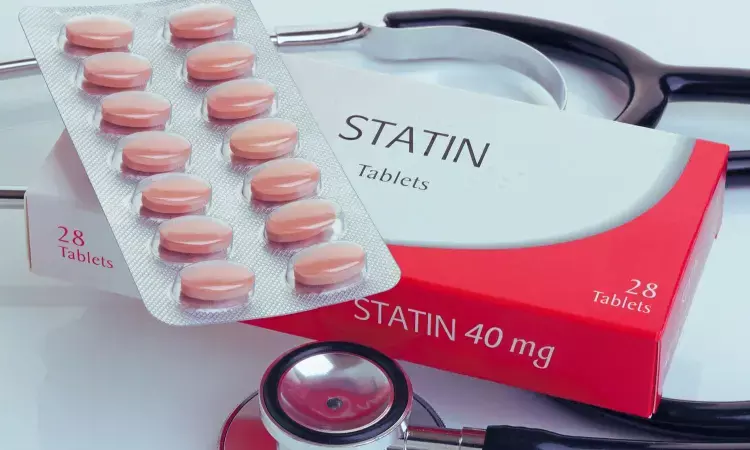- Home
- Medical news & Guidelines
- Anesthesiology
- Cardiology and CTVS
- Critical Care
- Dentistry
- Dermatology
- Diabetes and Endocrinology
- ENT
- Gastroenterology
- Medicine
- Nephrology
- Neurology
- Obstretics-Gynaecology
- Oncology
- Ophthalmology
- Orthopaedics
- Pediatrics-Neonatology
- Psychiatry
- Pulmonology
- Radiology
- Surgery
- Urology
- Laboratory Medicine
- Diet
- Nursing
- Paramedical
- Physiotherapy
- Health news
- Fact Check
- Bone Health Fact Check
- Brain Health Fact Check
- Cancer Related Fact Check
- Child Care Fact Check
- Dental and oral health fact check
- Diabetes and metabolic health fact check
- Diet and Nutrition Fact Check
- Eye and ENT Care Fact Check
- Fitness fact check
- Gut health fact check
- Heart health fact check
- Kidney health fact check
- Medical education fact check
- Men's health fact check
- Respiratory fact check
- Skin and hair care fact check
- Vaccine and Immunization fact check
- Women's health fact check
- AYUSH
- State News
- Andaman and Nicobar Islands
- Andhra Pradesh
- Arunachal Pradesh
- Assam
- Bihar
- Chandigarh
- Chattisgarh
- Dadra and Nagar Haveli
- Daman and Diu
- Delhi
- Goa
- Gujarat
- Haryana
- Himachal Pradesh
- Jammu & Kashmir
- Jharkhand
- Karnataka
- Kerala
- Ladakh
- Lakshadweep
- Madhya Pradesh
- Maharashtra
- Manipur
- Meghalaya
- Mizoram
- Nagaland
- Odisha
- Puducherry
- Punjab
- Rajasthan
- Sikkim
- Tamil Nadu
- Telangana
- Tripura
- Uttar Pradesh
- Uttrakhand
- West Bengal
- Medical Education
- Industry
High-Intensity Statin Therapy Shows No Diabetes Difference for CAD Patients, LDL-C Impacts Outcome: LODESTAR Trial Analysis

Korea: In a recent post-hoc analysis of the LODESTAR randomized clinical trial, researchers found that high-intensity statin therapy for patients with coronary artery disease (CAD) did not significantly alter the incidence of new-onset diabetes mellitus (NODM) between rosuvastatin and atorvastatin. This study sheds light on the nuanced effects of different statin types on diabetes risk when LDL cholesterol (LDL-C) levels are aggressively controlled.
"A difference in the effect of statin type on NODM was noted when LDL-C levels were reduced to below 70 mg/dL," the researchers wrote in Cardiovascular Diabetology.
The impact of rosuvastatin compared to atorvastatin on new-onset diabetes mellitus in patients undergoing high-intensity statin therapy for coronary artery disease (CAD) has yet to be fully understood. Myeong-Ki Hong, Severance Hospital, Yonsei University College of Medicine, Seoul, Korea, and colleagues aimed to evaluate the risk of NODM in patients with CAD treated with rosuvastatin compared to atorvastatin in the randomized LODESTAR trial.
In the LODESTAR trial, CAD patients were randomly assigned to receive either rosuvastatin or atorvastatin through a 2-by-2 factorial design. This post-hoc analysis compared the 3-year incidence of NODM between the two treatments in the as-treated population, focusing specifically on those undergoing high-intensity statin therapy.
The study revealed the following findings:
- Among 2932 patients without diabetes mellitus at baseline, 2377 were included in the as-treated population analysis.
- In the as-treated population with high-intensity statin therapy, the incidence of NODM was not significantly different between the rosuvastatin and atorvastatin groups (11.4% versus 8.8%, hazard ratio [HR] = 1.32).
- When the risk of NODM with rosuvastatin versus atorvastatin was assessed according to the achieved low-density lipoprotein cholesterol (LDL-C) level, the risk of NODM began to increase at an LDL-C level below 70 mg/dL.
- The incidence of NODM was significantly greater in the rosuvastatin group than in the atorvastatin group when the achieved LDL-C level was < 70 mg/dL (13.9% versus 8.0%; HR = 1.79).
In the post-hoc analysis of the LODESTAR trial, the incidence of new-onset diabetes mellitus was similar between rosuvastatin and atorvastatin for CAD patients undergoing high-intensity statin therapy. However, the risk of NODM appeared to be influenced by the efficacy of LDL-C reduction.
"Specifically, when LDL-C levels were below 70 mg/dL, the rosuvastatin group showed a significantly higher risk of NODM than the atorvastatin group. Conversely, when LDL-C levels were 70 mg/dL or higher, there was no significant difference in NODM risk between the two statin treatments," the researchers concluded.
Reference:
Hong, SJ., Lee, YJ., Kang, W.C. et al. Effect of rosuvastatin versus atorvastatin on new-onset diabetes mellitus in patients treated with high-intensity statin therapy for coronary artery disease: a post-hoc analysis from the LODESTAR randomized clinical trial. Cardiovasc Diabetol 23, 287 (2024). https://doi.org/10.1186/s12933-024-02386-w
Dr Kamal Kant Kohli-MBBS, DTCD- a chest specialist with more than 30 years of practice and a flair for writing clinical articles, Dr Kamal Kant Kohli joined Medical Dialogues as a Chief Editor of Medical News. Besides writing articles, as an editor, he proofreads and verifies all the medical content published on Medical Dialogues including those coming from journals, studies,medical conferences,guidelines etc. Email: drkohli@medicaldialogues.in. Contact no. 011-43720751


